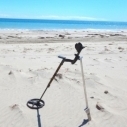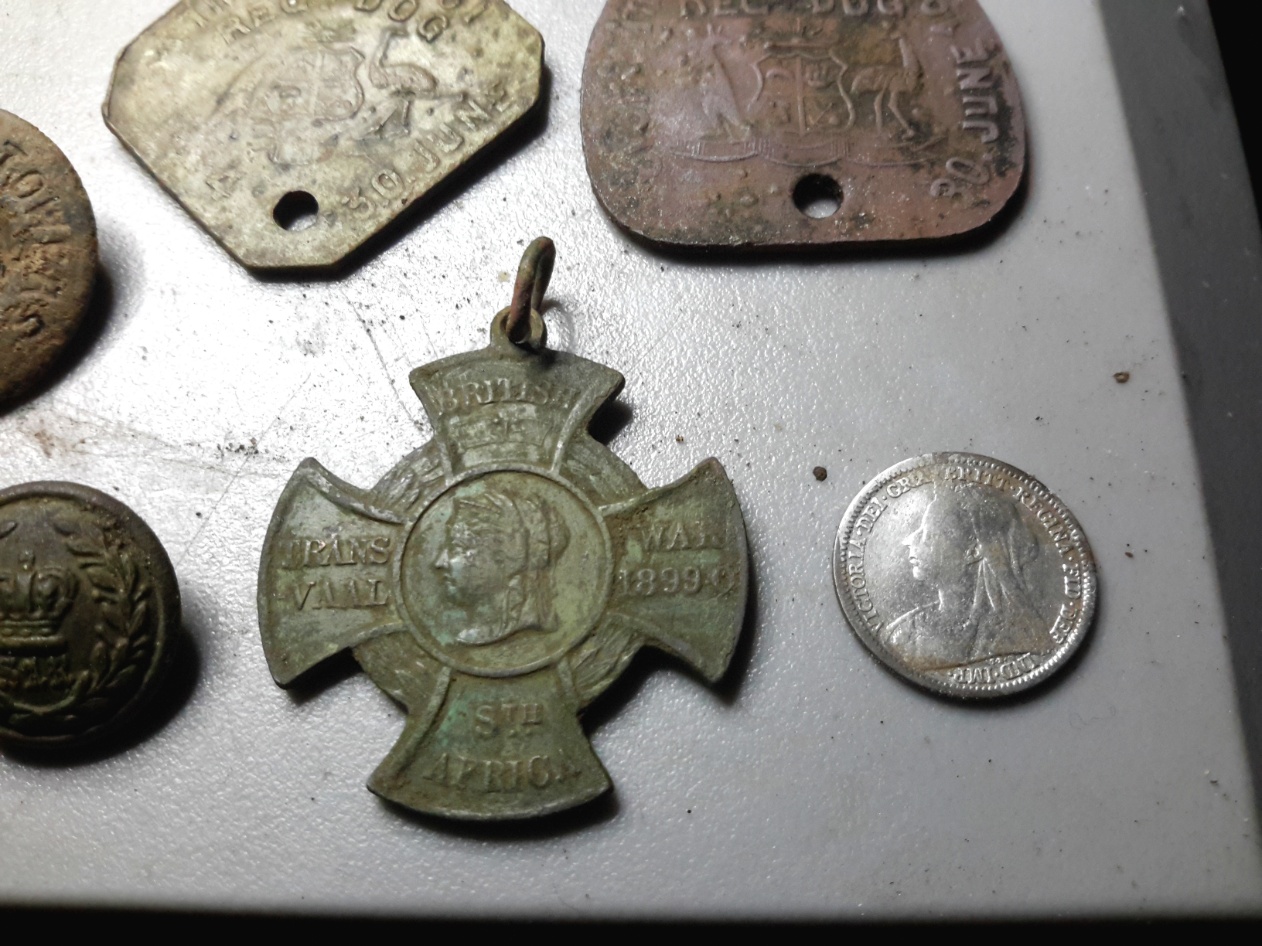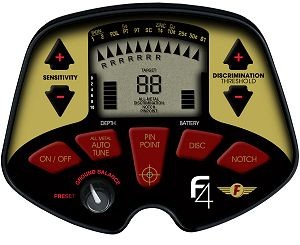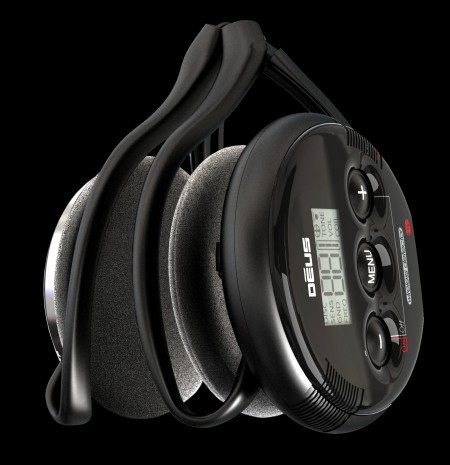-
Posts
213 -
Joined
-
Last visited
Content Type
Forums
Detector Prospector Home
Detector Database
Downloads
Everything posted by Goldpick
-

Tesoro Factory For Sale
Goldpick replied to Steve Herschbach's topic in Compass, D-Tex, Tesoro, Etc.
The should at least give a statement on where owners stand with the lifetime warranty and repairs. My guess is neither will happen or be honored, though would be nice to at least have a definite yes or no and then people can move on. Personally I think they just don't want to have to confront or deal with any potentially angry customers who may have bought a Tesoro late in the piece just before they closed shop (with a worthless warranty). Even though our local agent carries out repairs to the Tesoro range, don't know how long that will last regarding sourcing parts or whether they personally have any in stock. -

Fisher F-Pulse Finally Working Properly?
Goldpick replied to mh9162013's topic in Metal Detector Advice & Comparisons
Might be worth trying a noise cancel with the F-pulse already turned on (and reasonably close to the coil) - if you haven't already done so. -
Sounds like cable shielding issues, as phrunt mentioned it could be either the cable connector or female socket in the housing. Seems to be a common issue, used to have the same problem with the Infinium coil cable plugs with the same style of connectors. Also check that none of the pins are bent or cracked and align properly with the socket.
- 4 replies
-
- coils
- garrett at
-
(and 1 more)
Tagged with:
-
I've learnt over the years to substantially slow down my swing speed even when utilising a faster recovery speed setting (in my specific being the Deus). Even at a moderate swing speed you are still only getting a brief snapshot of what is passing under the coil, especially in junky or iron contaminated ground. Some good sounding iron high toning may be prevalent on initial sweeps, though after some slower passes the detector almost re-corrects the high tone iron target to a low tone - same with some non-ferrous targets, they can clean up to a more accurate tone with a slower sweep speed or after multiple sweeps over the suspect target. Some of those difficult non-ferrous can be completely overlooked if combining fast sweep speeds and a fast recovery setting - you may only get part tone, or sometimes none at all. I've proved it to myself on multiple occasions going over the same patches of ground picking out targets that were literally never heard on the first few passes. - not due to poor coverage or incorrect settings, simply due to not taking the time to slow things down to give the detector a chance to correctly identify or even pick up on the targets in the first place. Either way you would think it would be logical to slow your sweep speed down if detecting difficult sites where faster recovery speeds are justified, whether it be with the Equinox or Deus, especially if set on the highest number of tones. Why put myself through the "torture" of say 99 tones and a high recovery speed in an area saturated by targets, it simply gives me a more comprehensive picture of what is happening under the coil at any given time, you either love it or hate it. Hence once again why it can be advantageous to slow down and forensically sift through the various in-ground targets, and give the detector a chance to do its job. As Steve mentioned, I don't necessarily think there is any "set in stone" procedure for matching up swing speed with recovery speed, despite what some people may preach, do whatever works for you. At the end of the day achieving some good finds is all that matters, and if slowing sweep speed combined with a higher recovery speed works for you (just as it did for me), then that is a good thing.
-
Good to see that XP are continually revising products based off customer feedback, I think this is the second design revision from the original charging clip so far. Probably the biggest pain was the tight fitment to the newer HF coils, and that often led to broken clips when trying to squeeze them over what seemed to be a wider skid plate. Another factor was the sheer amount of third party sources that were supplying stronger computer printed charging clips, good incentive for XP to re-engineer the clip.
-

Under 4 Pound, Under $2000 Gbpi Challenge
Goldpick replied to Steve Herschbach's topic in Metal Detector Advice & Comparisons
I think many manufacturers are too caught up in developing mass produced detectors to keep the cash rolling in these days vs developing specialty detectors to cater for what is probably a smaller cross section of the market . Possibly seen as too much of a financial risk vs return type scenario, especially if some previously released detectors have not fared as well as expected. Would that mean that for a new lightweight PI gold detector to be a financial success, would they have widen its a appeal to both those new to the hobby through to the more experienced prospector by offering a simple though powerful platform that anyone can master in a short period of time. The Goldmonster comes to mind as a simplified detector out of the box that can be a turn on and go proposition (despite being VLF), whereas previous Minelab gold VLF's require a decent amount of experience to gain optimum performance/setup, thus have limiting appeal to the masses. That also means embracing new technology to get the weight down on these detectors, including use of lightweight lithium battery packs, composite materials etc - afterall this is 2019, not the 1990's. -

Pocket Metal Detector Picosens
Goldpick replied to Bob'ke's topic in Metal Detector Advice & Comparisons
I think to properly critique the Deus, you really have to try one out to discover whether there are real shortfalls in the design/operation for your requirements. In theory the wireless design may seem to some to be prone to EMI when really it isn't, my Explorer and Etrac with a wired connection were a lot worse in that department, especially around buried electrics and transformers. The Deus is no different to other VLF detectors in that respect, with main EMI derived from using physically larger coils and lower frequencies rather than the actual wireless connection between components - can't say I have ever had an issue. Even then you have multiple frequencies and offsets to chose from if EMI is prevalent on a specific frequency. Despite the coils being expensive, combined with huge adjustability of the Deus they prove to be very flexible over different sites negating the requirement for several coils, the 11" and 9" is pretty much all I require. Some other VLF's will require multiple coils due to the lack of inbuilt adjustments like recovery speed, where changing out the stock coil for a smaller one is the only choice for improving target separation, or if a larger coil is required for increased depth performance (ie. no ability to reduce the recovery speed). Having to change out wired coils can also be a pain, on Deus it takes just seconds to just slide on a different coil, start it up and off you go. The battery and connector in the lower shaft of the HF coils is waterproof, so no issues there with water ingress. Initially I too thought the display was going to be hard to read due to the size, though that hasn't proved to be an issue when compared to other detectors I have used in the past. -
Holed coins often worn as good luck charms, some coins with square nail holes (mostly coppers) were nailed to front doors or gates also for good luck. Congrats on the lovely coin.
-
If the ORX is anything like the Deus on wet sand, then you'll probably have to manually adjust the ground balance down to salt to have any chance of it running stable - also with some lowering of the sensitivity to suit. My main VLF for wet sand/water is the Racer 2, it does actually manage to ground balance using ground grab, unlike the Deus. Even then, as with most VLF detectors you do end up compromising on depth as a trade off for stability. On the upside the Deus does get good depth on the dry sand, I managed to pick out over 60 coins at one stage after some storms had eroded away the face of the sand hills. Only when you start to transition from the dry down to the damper sand do you start to get falsing, then you have re-adjust the settings all over again for it to remain useable. As others have mentioned, I very much prefer using multi-frequency at the beach (previously used an Explorer and Etrac) - very stable detectors when transitioning from dry to wet and vice versa, with minimal adjustment to settings. If you are going to be spending a large chunk of time on the beach, you will be much happier in the long run going to a MF detector - pretty much turn on and go detectors for that scenario.
-

Garrett No " Tone Only " Mode
Goldpick replied to Trailryder42's topic in Metal Detector Advice & Comparisons
I barely notice the vibration after using the AT Propointer for a while now, the only real downside is that it may drain power a little quicker. -
What sized coil are you currently using, might be time to invest in a smaller coil to deal with what sounds like very junky ground - will also allow for much easier pinpointing. Might also pay to slow down your swing speed if going too fast in junky ground, might be a case of the detector being a little overwhelmed processing/discriminating a large number of targets during your sweep. Not sure what the recovery speed is like on the F2, though I know if you sweep too quick with something like the older Ace 250, you can sometimes get a delayed signal response if working too quickly through junk/iron.
-
Looks like a 999.9 hallmark which would indicate 24K gold. If there are any other hallmarks they should indicate maker, date etc.
-

List Of ID For American Coins On The Orx
Goldpick replied to Ridge Runner's topic in XP Metal Detectors
If the pinpoint mode is anything like that on the Deus, then it should be just fine. Although I tend to pinpoint most of the time using the drawback method till the target is at the tip of the coil vs the actual pinpoint mode. Usually a very quick and accurate method for me when detecting in all types of areas, especially with the smaller 9" coils. -

List Of ID For American Coins On The Orx
Goldpick replied to Ridge Runner's topic in XP Metal Detectors
Trying to turn the ORX into a Deus with a wishlist of additional features isn't going to achieve anything, and sort of defeats the purpose of a cheaper and more simplified Deus regardless of how it compares with other detectors on the market . It is what it is and I doubt whether the pricing will change given that they have a huge fan base in Europe. In time if it doesn't achieve sales targets then we may see some movement in price. -
Have to agree with using the Raptor, lower profile and less intimidating for locals who are concerned about seeing people wielding shovels in the their local park. The curved blade makes for easy cutting of a flap for extracting targets vs using the serrated sawing action of lesche blades - just a personal preference for me, others may disagree. I tend to carry the Raptor out of sight in my finds pouch (ammo drop bag). I do have a stainless serrated shovel, though only use it on private permissions and areas out of town. Last time I went out with a couple of other guys using shovels in a park, locals reported us to the local council ranger( I was the only one using a hand tool). He had no problem with us using them though it did result in a lot of wasted time for both us and the ranger.
-

Anyone On The Forum With Assaying Knowledge?
Goldpick replied to Bugler's topic in Rocks, Minerals, Gems & Geology
Maybe the use of screen fire assaying would be more suitable if coarse gold is typically found in your samples vs the use of normal fire assaying. I think the charge sample for normal fire assays is quite small, and may not indicate the true amount of coarse gold in the original sample, whereas on a screen fire the coarser material is screened out separately and fire assayed ( including the screen), and the finer portion of the sample is also fire assayed. I know the mine I worked at had coarse visible gold in quartz veining, and results were often quite low from normal fire assays, whereas many of the screen fire assays often came back with some huge numbers. Whilst not professing to understand the absolute technicalities behind the methods, just commenting on what I used to see come across my desk over the years with assay results. Some of the gold/qtz samples we sent off had gold up to thumbnail size, hence those gold bearing sections of drill core in the ore zone were always marked up specifically for screen firing when logged by the geologists. -
I guess you are right in some respects, to the layman as long as a detector finds stuff, that's all that matters to them at the end of the day. And for those that regularly frequent forums, we are much more likely to dissect a detector to figure out how things work, and how to apply the various settings/features on offer to suit the ground we detect - and we are also more than likely to be in the minority. The criticism of Nokta/Makro is a bit miss directed, I'm sure if it were a US manufacturer pumping out such detectors in quick succession, it would be a proud achievement and not seen in a negative light. If people are angry or frustrated that their local manufacturers haven't moved with the times or listened to their customers, then maybe you should take that up with them - people asked Nokta/Makro to come up with alternatives and they obliged. XP should actually be flattered that other manufacturers are trying to emulate their success on what is now a 10 year old selectable frequency platform. Minelab were also well aware of XP encroaching on markets outside of Europe, and the Equinox was a direct response to that, albeit with added MF capability for added ability in salt and mineralisation. Funny thing is that it wasn't all that long ago that that Euro made detectors were often dismissed as not being suitable for mineralised ground that is often found in both Oz and the US, and hence spruiked as not a viable options even for general coin/relic duties, netherlone for prospecting. This was often a favourite line to run past customers here in Oz to help bolster their own detectors sales. For me it is this ignorance that has left a few manufacturers behind the eight ball, and it wasn't until some of these Euro detectors were privately imported that they found this wasn't indeed the case - those "unsuitable" detectors worked and they worked well. Fast forward to several years later, and we now have serious alternatives to the traditional offerings, and they are being actively improved upon with input from users. As they say variety is the spice of life, and personally I find it is refreshing to see detectorists out utilising a whole assortment of platforms, and not just sticking to the "safe" option.
-
This is something that has me a little perplexed, especially when a whole raft of opposition detectors from abroad are offering such an option on their detector platforms. How easy would it be to improve current popular models like the F75, AT Pro, etc with additional frequencies to make some US made detectors a more attractive proposition, or are we talking about the requirement for a completely new platform for this to happen ( too much cost for not enough return)? If just worries me when we see little or no response at all on trying to compete on the selectable frequency front. Some may say the market is already flooded with such detectors, though if you do not offer up an alternative to just single frequency VLF's, then customers may look elsewhere for detector platforms offering more flexibility/features for the money. Some of the selectable frequency detectors made abroad: Minelab Equinox (plus multi) Minelab 705 (coil change for different frequencies) Rutus Alter71 XP Deus/Orx Makro Kruzer Multi Nokta Impact Nokta Anfibio multi ...and many other lesser known Euro manufacturers with at least dual frequencies. It is evident that there are two distinct lines of thinking when it comes to producing a detector, either make one that has the capability of covering all or most fields of detecting (ie. prospecting, relic hunting, coin shooting, beach detecting), or produce several detectors, each with a specific purpose. The obvious downside is the sheer cost of owning a whole raft of detectors for specific purposes, something that used to be common place, though now not such an issue with the advent of very capable multi-use detectors suitable for low conductors right through to sub gram gold. Will be interested to see other views on the subject, have we seen the end of single use or specialist detectors, and whether multi-role/multi or selectable frequency detectors will rule going forward.
-

Findmall Closes All White’s Forums
Goldpick replied to Steve Herschbach's topic in White's Metal Detectors
Some parts of Findmall are still quite active, mainly for those that are offering new or innovative products or at least improvements to current platforms. The ones that are stagnating are little more than information sources and with next to no technical discussion - not surprising with some current detector platforms pushing towards or beyond a decade old now. Whilst VLF tech seems to have reached a peak, still no excuse not to further refine some detector platforms, especially with regards to offering selectable frequencies on US made detectors. -
I don't think Minelab are about to reveal full details of how their tech truly works, though the devil is in the detail - their multifrequency detectors may well transmit a full spectrum of frequencies, though in reality how many are actually utilised in the actual signal processing. Given that some of the programs on the Nox are weighted more towards higher conductors whilst others are weighted more to lower conductors, I doubt whether a full spectrum of frequencies is utilised 100% of the time. Probably a good thing if it results in faster processing and recovery speeds etc.
-
I have never noticed the different design on the current WS4's compared to the older ones - different shape and utilises the same type of push buttons as on the main controller vs the previous touch pad controls. Was this introduced in conjunction with the X35 coils or did I miss something?
-
Don't forget the excellent 5 year warranty on XP detectors - not that much goes wrong with these detectors. Something to think about when comparing say the ORX with a waterproof competitor, as most will only offer a 2 or 3 year warranty.
-
Weight wise it becomes a bit of a moot point to a degree considering the addition of electronics in some of the latest detector coils - Equinox 11" coil - 524 grams, Deus 11" coil - 465 grams including skid plate. Advances in coil construction with carbon fibre content also help lower overall weight to the point where the addition of miniaturised electronics and lithium batteries have negligible effect on balance. Another couple of advantages include the ability to run more than one set of wireless headphones to the same coil should you want to learn on the run from a more experienced detectorist, or just have fun listening in. Secondly and more importantly is if you own two wireless coils, you can essentially create two separate detectors, one utilising the headphones for full control, and the other operated via the main remote. I guess having wireless coils is one of those things that you have to experience over time to really appreciate the technology/benefits, just have to respect the fact that it is not for everyone.





